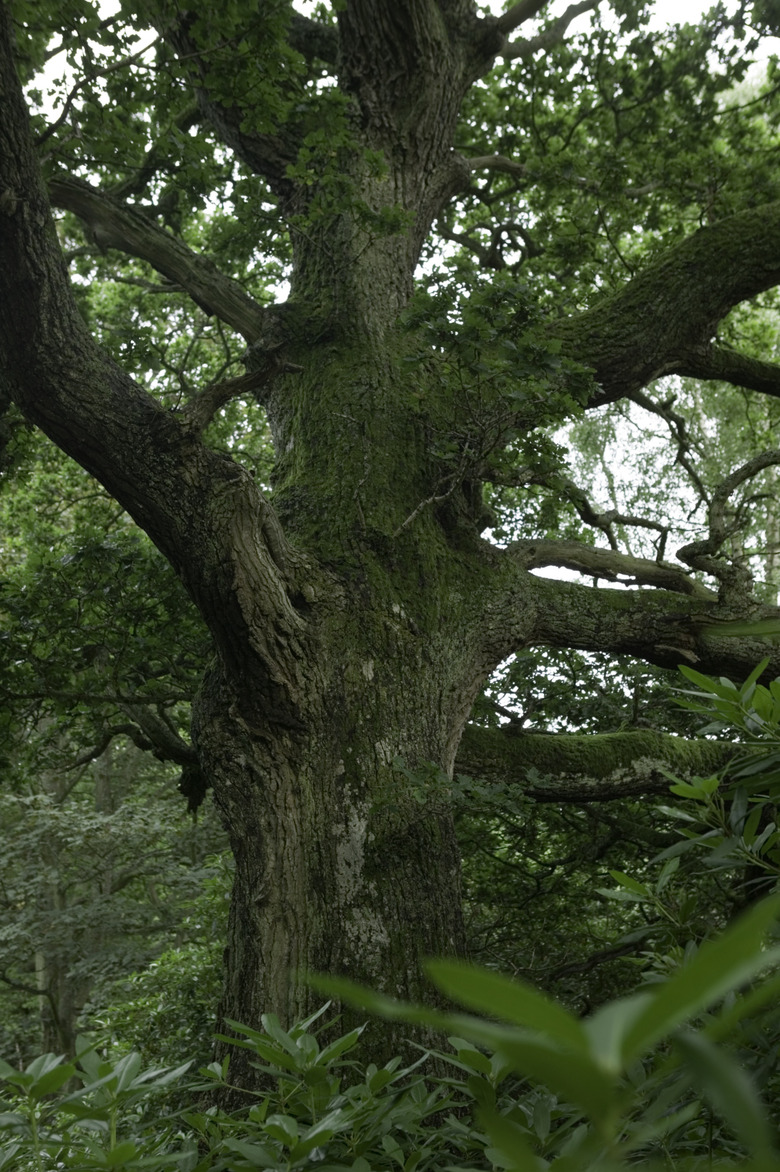Why Is My Oak Tree Weeping?
Slime flux, or wet wood, is a bacterial infection that causes trees to "weep" or "bleed" sap from the large branches or trunk of a tree. This "weeping" is called "fluxing". Slime flux attacks a wide range of trees including birch, maple, elm, willow and oak, and is common in large landscape trees.
Description
The predominant symptom of slime flux is the presence of a foul-smelling ooze that flows down the trunk or the branches of a tree. The ooze is colorless or tan, but turns dark when exposed to air. The bacteria responsible for this disease cause the sap inside the tree to ferment. During fermentation, the carbon dioxide and methane gases that are produced build up pressure that causes the sap to leak through cracks in the trunk. Infected wood appears water-soaked and is usually discolored. The sap on the bark attracts bacteria, yeast and fungi that produce the smell and slime.
- Slime flux, or wet wood, is a bacterial infection that causes trees to "weep" or "bleed" sap from the large branches or trunk of a tree.
- The predominant symptom of slime flux is the presence of a foul-smelling ooze that flows down the trunk or the branches of a tree.
Damage
Weeping from the trunk may last for months, causing the bark to decay. As the disease progresses, the cambium layer that's responsible for producing new wood may become damaged. Weeping from a branch may cause the leaves on those branches to turn yellow and stunted. In addition, the fermented ooze may kill grass and nearby plants when it lands on them. Slime flux doesn't usually kill trees, but can stress trees, leading to secondary infections and insect attacks.
Preventon/Control
There is no cure for slime flux, but trees are able to compartmentalize the disease to keep it away from healthy branches. Remove dead bark and loose bark so the area beneath can dry. Wash the sap off the surface of the trunk or branch, and apply insecticidal spray to reduce infestations by insects. Avoid wounding your tree. Minimize pruning and don't cut behind the ridge of bark that forms in the branch crotch. Horticulturists used to recommend drilling a hole in the trunk and letting the sap drip out through a pipe inserted into the hole. This treatment was supposed to help relieve pressure. However, it doesn't help the tree to heal any faster, and may even aggravate the condition by spreading the disease to other parts of the tree.
- Weeping from the trunk may last for months, causing the bark to decay.
- There is no cure for slime flux, but trees are able to compartmentalize the disease to keep it away from healthy branches.
White Flux
White flux, alcoholic flux or frothy flux, is an unrelated condition that may be confused with slime flux. It occurs when sap ferments in bark wounds, causing a colorless or white froth to appear. Unlike slime flux, it has a pleasant smell and doesn't last very long. Heat stressed trees are most susceptible to white flux.
